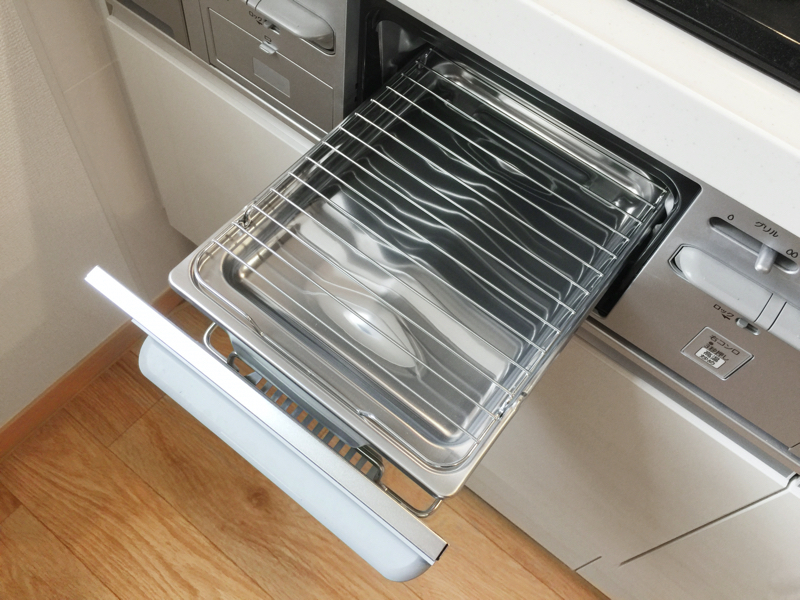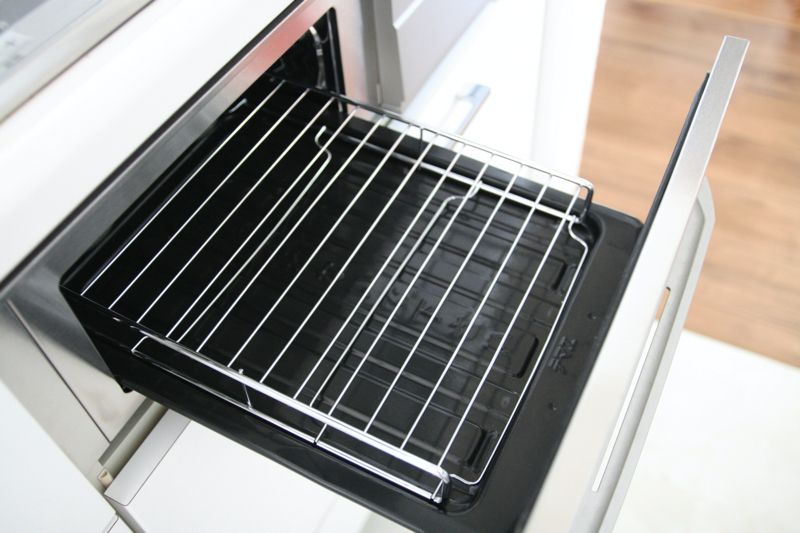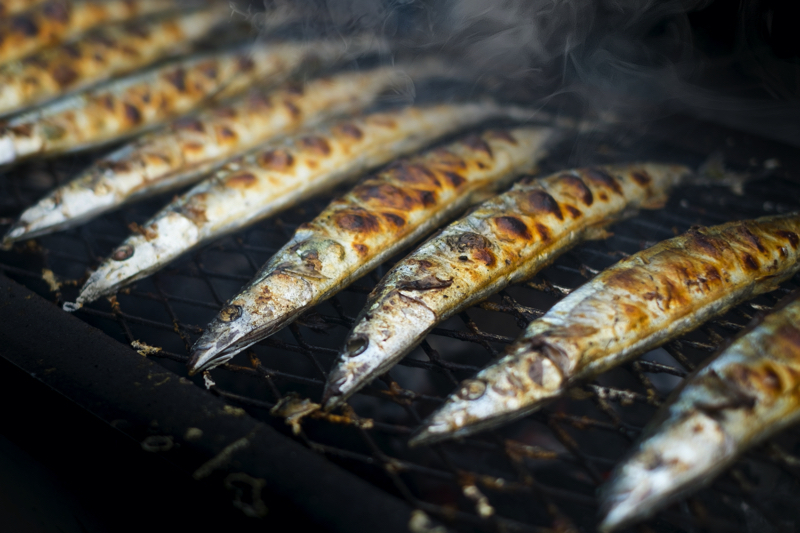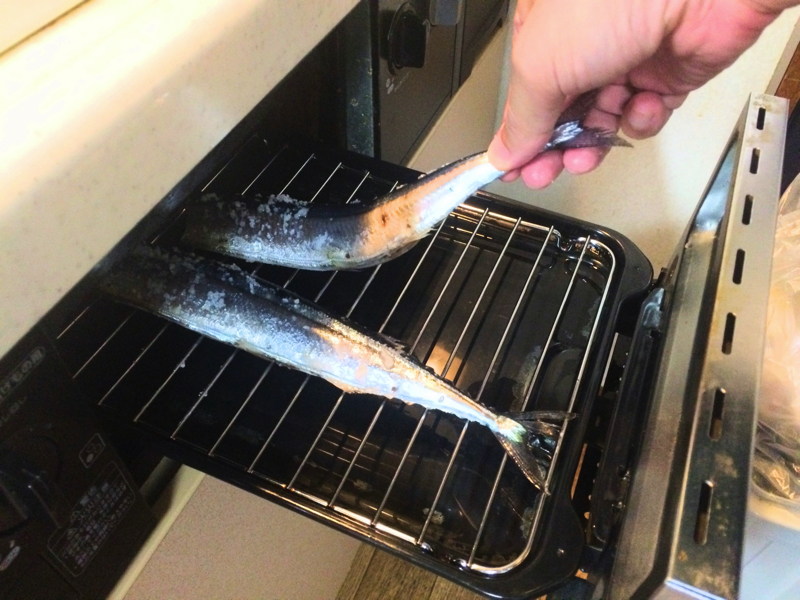There are two types of gas stove fish grills: “with water” and “without water.”
In this article, we will introduce how to use and the important points to note when using a gas stove fish grill, as well as tips on cooking fish to perfection!
The way you use the grill depends on whether you add water or not, so be sure to check the instructions.
In Japan, fresh fish is readily available in supermarkets and quite affordable, so knowing how to cook fish using a gas stove fish grill can make your Japanese cuisine experience even more enjoyable.
The types of fish grills

Fish grills have two types depending on the type of stove.
- Gas Stove
- Induction Cooktop
There are three types of gas stove configurations
- One-Sided Grilling without Water
- One-Sided Grilling with Water
- Gas Stove for Double-Sided Grilling without Water
Gas stoves with water capability require adding water for use, while those without water capability can be used without adding water
Gas stove fish grill can be a bit challenging to use depending on their type, so in this article, we will provide a more detailed explanation of each gas stove type
How to Distinguish Between Fish Grill with and without Water Feature

To distinguish between a fish grill with and without a water feature, please look at the drip tray located underneath the grill.
For fish grills that require water, the drip tray should have a label that says ‘Please add water.'(水を入れてお使いください)
For those without a water feature, it will be labeled as ‘Do not add water.'(水をいれないでお使いください)
If you’re unsure which type you have, start by checking the label on the drip tray located underneath the grill.
Basic Usage and Precautions for Gas Stove Fish Grill

The gas stove fish grill comes in two types: “without water” and “with water,” each requiring a different approach to use.
Let’s introduce the usage instructions for each type.
Single-Sided Grill Without Water
Single-sided grill without water are that it cooks fish at high temperatures, which eliminates the fishy smell and results in a deliciously crispy and flavorful finish. The fish’s surface becomes crispy while the inside remains tender and tasty.
You can cook fish without the need for water, making it easy to clean as you don’t have to worry about adding water. Additionally, it has the advantage of preventing fish from sticking to the grill grates.
However, you will need to flip the fish, which can make the fish more prone to falling apart.
Use chopsticks or tongs to carefully turn the fish over.
Double-Sided Grill Without Water
Double-sided grilling without water is designed with heating elements both on top and bottom, allowing you to grill both sides of the fish simultaneously.
You don’t have to flip the fish, so you can grill the fish in a shorter time compared to a single-sided grill without water.
Some grill models allow you to adjust the heat settings for both the top and bottom elements, providing more control over the cooking process.
However, compared to single-sided grill, double-sided grill often have higher heat levels, which can lead to fish sticking to the grates more easily, requiring some extra effort in the cleaning process, which is a disadvantage.
Single-Sided Grill with Water
Single-sided grill with water is used by adding water to the drip tray
Adding water to use the fish broiler with water helps prevent the temperature inside the grill from rising excessively and also serves to prevent sticking.
Furthermore, you can use it without the smoke filling the room. The water helps cool the oil that drips into the drip tray, making it less likely for smoke to form.
If you use it without adding water, there is a risk of the fish’s oil dripping into the drip tray and potentially causing a fire.
Gas stoves can lead to serious accidents if they catch fire, so it’s essential to remember to add water when using a fish grill designed for it.
The disadvantages of a fish grill for single-sided grilling with water include the need to flip the fish during cooking, and because it requires water, cleaning the drip tray can be slightly more involved compared to a waterless grill.
It’s important to confirm the usage instructions before using it.

We have provided instructions and important points to consider for using a gas stove fish grill.
The usage instructions and precautions for a gas stove fish grill can vary depending on whether it’s the waterless or water-added type. Therefore, please be sure to check the instructions before using it. Using it incorrectly can pose a fire hazard.
By all means, consider learning how to use a fish grill during your life in Japan, and enjoy the unique Japanese ingredients and cuisine that it can offer.
Moving to Japan? Smart Relocate is here for your support
Looking for a house in Japan from abroad? Leave it to Smart Relocate.
We offer a wide range of services, from finding properties to assisting with your life after settling in.
For more detailed support, please click here.:https://smart-relocate.com/en/rent/
For inquiries via email, please use the following contact.:Contact Form
Alternatively, you can also engage in conversations via our chat service on ‘WhatsApp’ by clicking the button at the bottom of the website
We provide support in both Japanese and English.


 CONTACT
CONTACT







